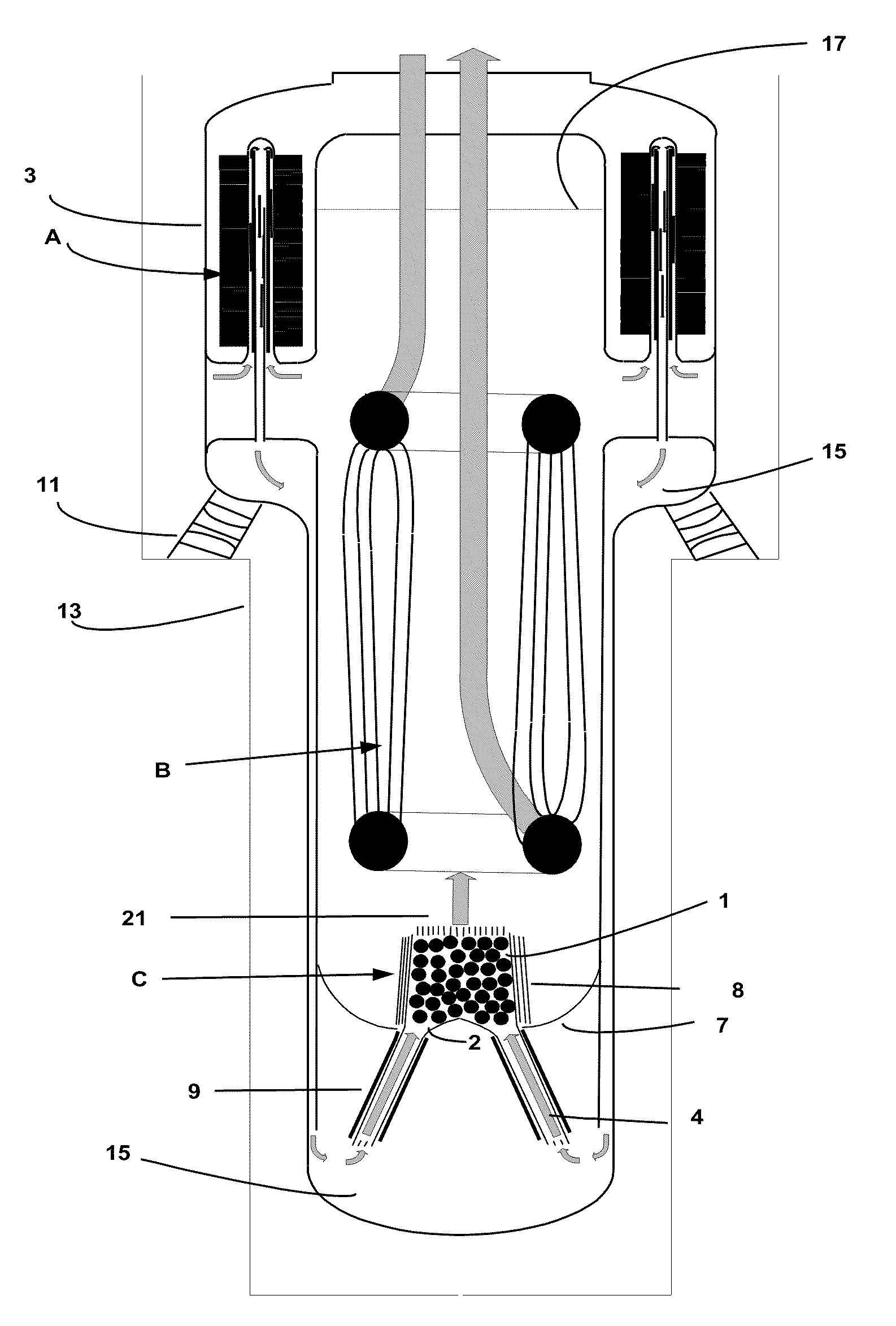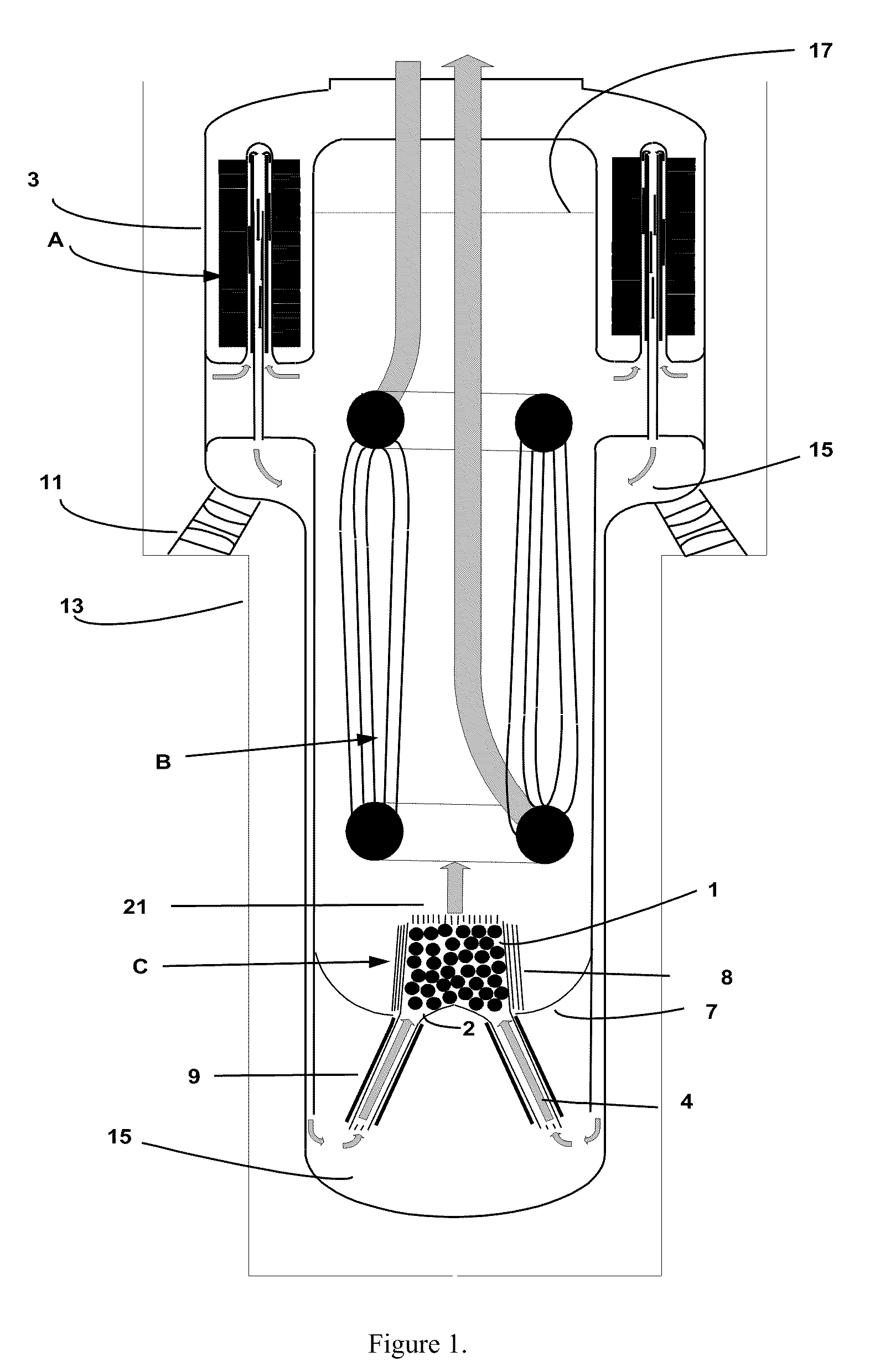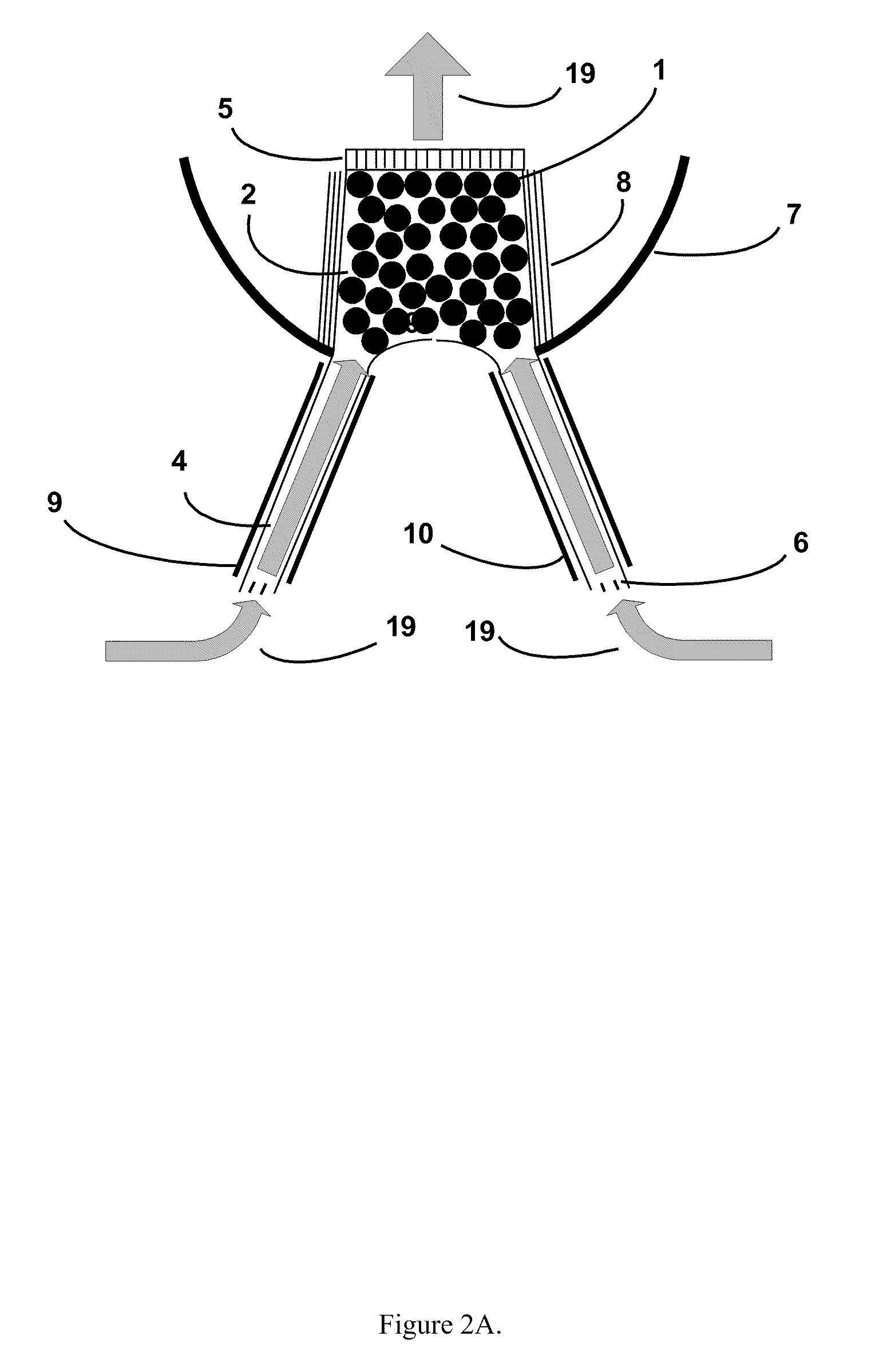Bi-stable nuclear reactor
a nuclear reactor and bi-stable technology, applied in nuclear reactors, nuclear elements, greenhouse gas reduction, etc., can solve the problems of catastrophic fire, low heat transfer efficiency, and many critical failure points of conventional reactors, so as to reduce thermal transients and dissipate longer-term heat decay
- Summary
- Abstract
- Description
- Claims
- Application Information
AI Technical Summary
Benefits of technology
Problems solved by technology
Method used
Image
Examples
Embodiment Construction
[0063]Referring now to FIG. 1, one embodiment of an intrinsically safe nuclear fission reactor may comprise an upper chamber 2 to hold the fuel spheres 1 in to a configuration that supports fission.
[0064]When the pumps A are turned on, and sufficient pressure or flow 19 is achieved, the fuel spheres 1 are pushed up into the upper core chamber 2 and it is in the “On” state. The upper core is surrounded by a reflector 8 which, in one embodiment, comprises a generally cylindrically-shaped side reflector portion that encircles the core chamber. Additional reflectors may also be provided in certain reactor designs. As will be described in greater detail, an inverted cone shaped lower chamber 4 is positioned directly under the core chamber to hold the fuel spheres apart from each other in the “off” state, the walls of this chamber are surrounded by neutron moderating, or absorbing materials.
[0065]One possible variant of application of the intrinsically safe reactor is in the Fast Reactor ...
PUM
 Login to View More
Login to View More Abstract
Description
Claims
Application Information
 Login to View More
Login to View More - R&D
- Intellectual Property
- Life Sciences
- Materials
- Tech Scout
- Unparalleled Data Quality
- Higher Quality Content
- 60% Fewer Hallucinations
Browse by: Latest US Patents, China's latest patents, Technical Efficacy Thesaurus, Application Domain, Technology Topic, Popular Technical Reports.
© 2025 PatSnap. All rights reserved.Legal|Privacy policy|Modern Slavery Act Transparency Statement|Sitemap|About US| Contact US: help@patsnap.com



